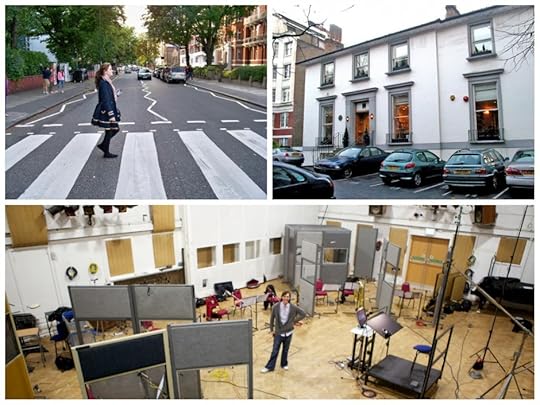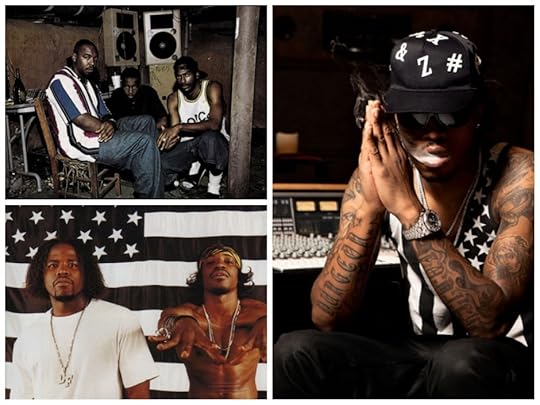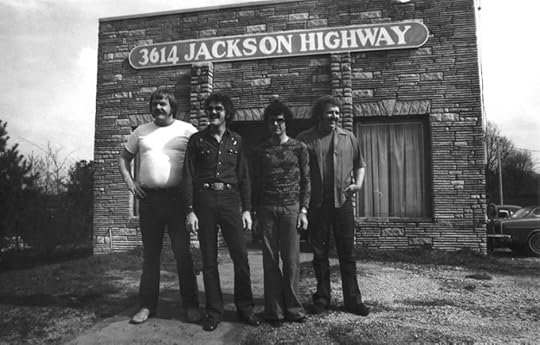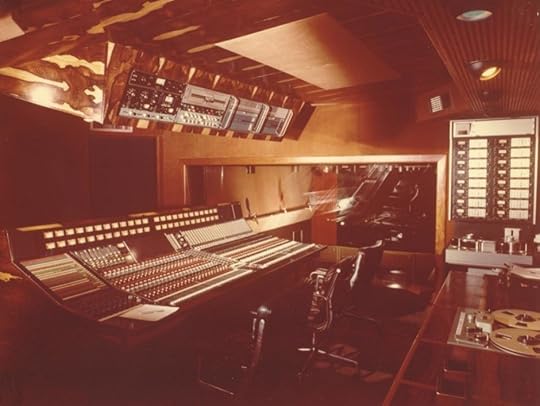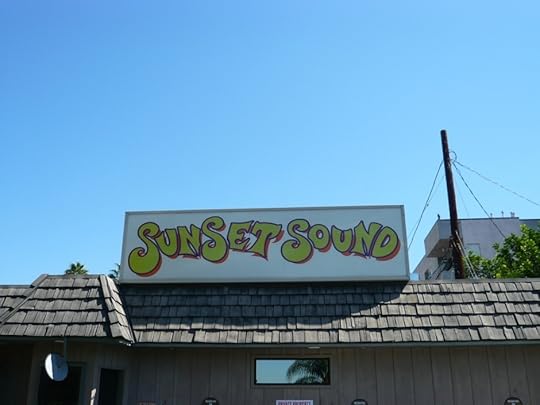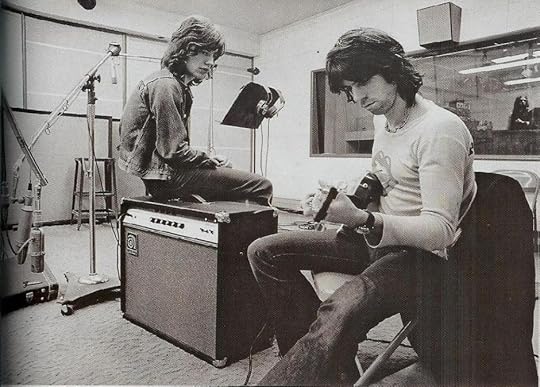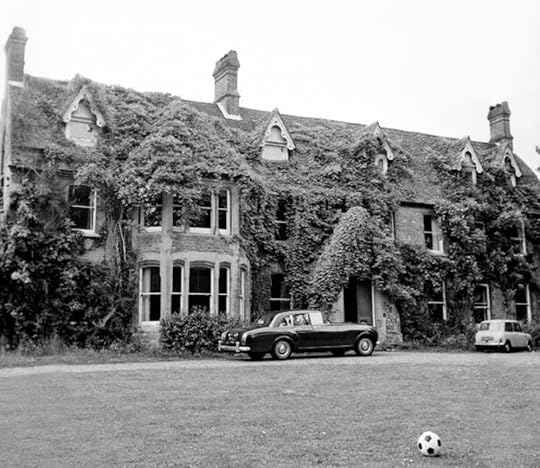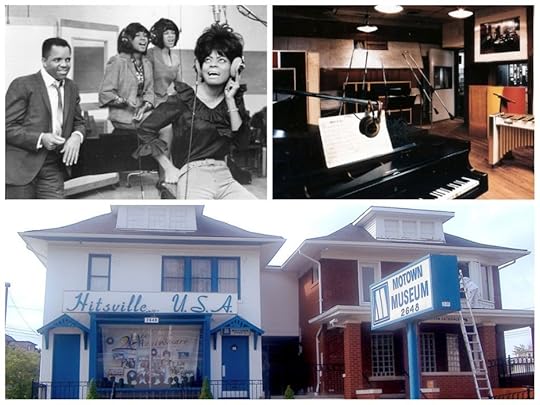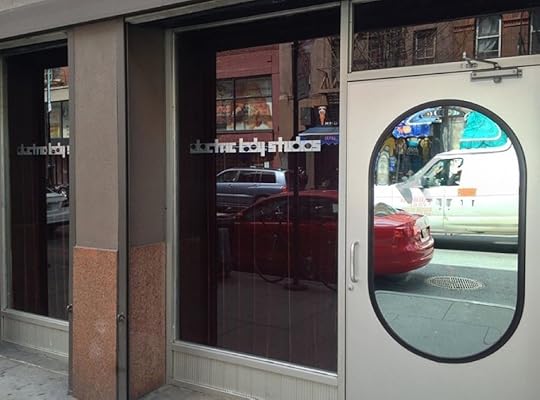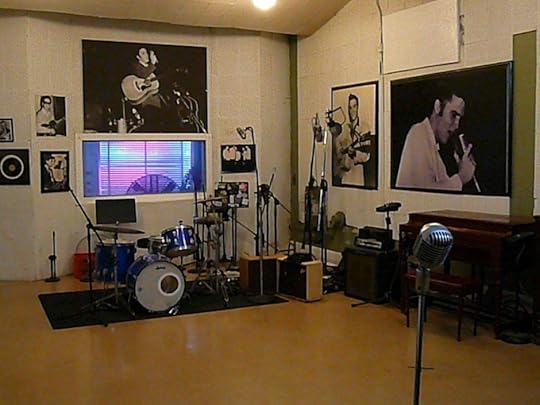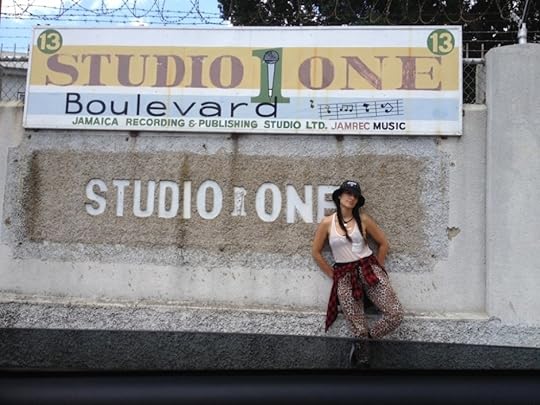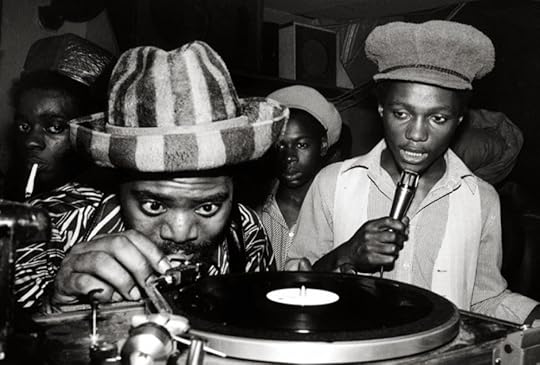Matador Network's Blog, page 2282
April 17, 2014
15 legendary recording studios
I was visiting London a few weeks ago and on a slow day decided to do the Beatles walking tour (which was inevitably called the “Magical Mystery Tour”). The tour of course ended at the legendary Abbey Road Studios in northwest London, and I got to see no fewer than six tourists nearly get killed stepping directly into oncoming traffic while trying to catch the iconic crosswalk photo.
Modern music fans usually don’t listen to music live, unlike our ancestors, who listened to live music exclusively. As I stood outside Abbey Road Studios and watched a 16-year-old Colombian girl weep at the site where the likes of “Golden Slumbers,” “A Day in the Life,” and “All You Need Is Love” were recorded, I realized that a musical tour of the world — a tour of the songs that moved you to tears, or helped you through a hard time, or amped you up for a big moment — would actually be a tour of the studios, these often nondescript buildings that are typically hidden in plain sight in our cities. Here are some of the world’s greatest studios.
Abbey Road Studios
The studio itself doesn’t stand out particularly from the rest of the buildings around it, and it sits in a fairly quiet posh northwestern London suburb. If it weren’t for the tourists crowding the crosswalk and the Beatles-related graffiti covering its outer gate, one might pass and never notice it. The most famous image of Abbey Road is of course the crosswalk right outside the studio. Vehicles in London are legally required to wait at so-called “zebra crossings” as long as you physically stay in motion, so you can take as long as you like taking your picture, as long as you move in slow motion.
Aside from most of the Beatles albums, Abbey Road (formerly EMI Studios) is also the recording site of Pink Floyd’s The Dark Side of the Moon (1973), Duran Duran’s eponymous debut album (1981), parts of Radiohead’s The Bends (1995) and OK Computer (1997), and Lady Gaga’s Born This Way (2011).
Images via, via, & via
The Dungeon
The Dungeon is probably better known for the hip-hop collective that was born out of it, the Dungeon Family. The Dungeon itself was a studio in producer Rico Wade’s mother’s basement in Atlanta, Georgia, but the collective has included some of the greatest hip-hop acts of the South and, consequently, of all time.
At the top left is the only picture I’ve been able to find of the Dungeon — pictured in it are the Dungeon Family and production-company founders of Organized Noize, Sleepy Brown, Ray Murray, and Rico Wade (from left to right). Probably the most famous members of the Dungeon Family are Big Boi and Andre 3000 (bottom left). Virtually all of Outkast’s albums were recorded with the Dungeon Family. It’s also the home of Gnarls Barkley, Cee-Lo Green, Bubba Sparxxx, Janelle Monae, and Future (pictured to the right with a Dungeon Family tattoo on his forearms).
Images via, via, & via
Muscle Shoals Sound Studio
Muscle Shoals may be best known for a song that wasn’t recorded at Muscle Shoals: Lynyrd Skynyrd’s “Sweet Home Alabama.” One of the lines is “Now Muscle Shoals has got the Swampers / And they been known to pick a song or two.” Muscle Shoals was formed when a band, the Muscle Shoals Sound Rhythm Section (nicknamed the Swampers) broke away from the great FAME Studios nearby and formed their own. While they’ve got a slightly bigger studio these days, it’s still in the tiny town of Muscle Shoals, way off the beaten path in northwestern Alabama.
Even though the original studio looked like a roadside mechanic’s garage, the Muscle Shoals Sound Studio would go on to record tracks for the likes of the Rolling Stones (“Brown Sugar” and “Wild Horses” from Sticky Fingers in 1971), Paul Simon’s “Kodachrome” (1973), Bob Seger’s Night Moves (1976), the Black Keys’ awesome Brothers (2009, at the new studio), and, of course, Lynyrd Skynyrd’s first album (but not released till much later), Skynyrd’s First (1978).
Images via & via
Trident Studios
It’s hard to understate how important London studios were to rock ‘n’ roll in the ’60s and ’70s, and high among those studios was Trident. Tucked back in an alley in London’s posh Soho neighborhood, Trident is barely noticeable from the street, and it takes a little bit of searching to even realize it’s a studio.
Relative anonymity aside, Trident Studios were responsible for the discovery of Queen and their first four albums, Queen (1973), Queen II (1974), Sheer Heart Attack (1974), and A Night at the Opera (1975), as well as James Taylor’s eponymous debut album (1968), the Rolling Stones’ Let it Bleed (1969), David Bowie’s The Rise and Fall of Ziggy Stardust and The Spiders from Mars (1972), and Lou Reed’s Transformer (1972).
Images via & via
Sunset Sound Recorders
On the other side of the world, we have Sunset Sound Recorders, on Sunset Boulevard in Hollywood, California. It was originally built for recording the music to Walt Disney movies, and you can thank them for Mary Poppins, Bambi, and 101 Dalmatians, but they went on to much greater rock heights.
Probably the most famous album recorded here was the Rolling Stones’ Exile on Main Street (1972, and pictured above), generally believed to be their best ever, but it was also the home of the Beach Boys’ best album, Pet Sounds (1966). My personal favorites, however, are Led Zeppelin’s albums Led Zeppelin II (1969) and Led Zeppelin IV (1972), both of which were partially recorded and mixed here. Other famous ones include the Doors’ The Doors (1967) and Strange Days (1967), Jet’s Get Born (2003), the O Brother, Where Art Thou? soundtrack, and, of course, Macy Gray’s On How Life Is (2000).
Images via & via
Headley Grange
Headley Grange is a former poorhouse in Headley, England, and it gets on this list for a single reason: its stairwell. During a recording session in the room next door, Jimmy Page was trying out the riff to “When the Levee Breaks,” when the crew started setting up John Bonham’s drum kit in the hall. He went out, start playing, and they recorded it from the stairwell. The result is one of rock’s best ever sounds. Bad Company, Fleetwood Mac, Genesis, and Peter Frampton recorded here as well.
Image via
Motown
Of course Motown is on here. Technically, the studio itself is called “Hitsville, U.S.A.” (now a museum, pictured at the bottom), but the site was also the home of Motown’s headquarters in Detroit, and as such I’m calling it Motown. It was without a doubt one of the most important recording studios of all time, and if you say the name “Motown” now, it evokes an entire genre of music put out by Berry Gordy’s Motown label.
Among the many great albums recorded at Hitsville are Marvin Gaye’s What’s Going On (1971) and Let’s Get it On (1973), the Jackson 5’s debut Diana Ross Presents the Jackson 5 (1969 — Ross and the Supremes are pictured at the top left with Berry Gordy), the Marvelettes’ Please Mr. Postman (1961), and Stevie Wonder’s debut, The Jazz Soul of Little Stevie (1962).
Images via, via, & via
Electric Lady Studios
Electric Lady Studios (as you’ve probably guessed) was founded by Jimi Hendrix after how much it cost him to record his epic album Electric Ladyland. Hendrix was only able to use the studio for four weeks before he died, but the studio, in New York’s Greenwich Village, is still very much in use.
We can thank Electric Lady Studios for Zeppelin’s Houses of the Holy (1973) and Physical Graffiti (1975), Patti Smith’s Horses (1975) The Clash’s Combat Rock (1982), Billy Idol’s Rebel Yell (1983) Weezer’s eponymous 1995 album, Santana’s Supernatural (1999), the White Stripes’ De Stijl (2000), the Roots’ Game Theory (2006), as well as a ton of Kiss albums.
Images via & via
Sun Studio
We’ve been focusing a lot on rock, so let’s just get this out of our system: Sun Studio, in Memphis, Tennessee, was originally more of a blues outfit. But blues begat rock, and it begat it right in Sun Studios in the form of Elvis Presley, Jerry Lee Lewis, Roy Orbison, and Johnny Cash, all of whom recorded albums here.
Aside from the founders of rock, Sun Studio also recorded albums for blues greats B.B. King, Howlin’ Wolf, and Junior Parker. It closed for a while but then reopened in 1987, where, probably most notably, it recorded U2’s Rattle and Hum (1988).
Images via & via
Studio One
It’s called “the Motown of Jamaica,” but really, it should just be called Studio One. Because Studio One is the home of reggae, and it doesn’t need the Motown qualifier.
Founded by Clement “Coxsone” Dodd (the man with the microphone) back in 1963, Studio One recorded albums for Bob Marley and the Wailers, Lee Scratch Perry, Burning Spear, and Toots and the Maytals. You’re welcome, world.
Images via & via
Rolling Stones Mobile Studio
This one could get on here just for the novelty of having what’s basically a truck with a recording studio in it, but it’s actually been the site of a number of insanely good recordings. It was set up by Mick Jagger when he got sick of all the problems of using regular recording studios. They set up a studio in his home and then, so they could move it around, put a control room into this van.
We can thank the mobile studio for songs like Deep Purple’s “Smoke on the Water,” and — because it’s mobile — for the most famous live recording of Bob Marley’s “No Woman, No Cry” — the one appearing on the posthumous Legend (1984). It also recorded parts of a number of Stones and Zeppelin albums, as well as Simple Minds’ 1979 debut album, Life in a Day, and live performances by Patti Smith and the Ramones.
Images via, via, & via
Capitol Studios
The home of Capitol Records, Capitol Studios gets on this list for the sheer breadth of the artists they’ve recorded here. All major record labels are going to have crazy amounts of awesome musical artists recording in their studios, but Capitol Records is best known for its “echo chambers,” which are part of an underground concrete bunker designed by legendary guitarist and sound engineer Les Paul to get a better reverb sound.
The studios are most famous for being the place where Frank Sinatra did a lot of his recordings — his microphone is still here, and the band Bastille recently recorded on it — as well as being a home to Nat King Cole and the Beach Boys. But it wasn’t just older music: Oasis, Daft Punk, Aaliyah, Outkast, and fun. have all recorded here.
Images via & via
Lee “Scratch” Perry’s Black Ark
Easily the most fascinating studio on this list is Lee “Scratch” Perry’s Black Ark Studio in Kingston, Jamaica. While not quite as mainstream, and definitely more low-tech than nearby Studio One, the Black Ark was known for Perry’s innovative producing techniques, and also for his incredibly strange behavior. He was known for blowing ganja smoke into the tape decks, burying tapes, and spraying the unprotected tapes with blood, urine, and whiskey to “bless” them. Eventually, after a few rough years of being extorted by gangsters, Perry covered the entire building in magic-marker drawings and then burned it to the ground to get rid of ‘bad spirits.’ Other than producing many of Perry’s own records (and basically inventing the ‘dub’ genre), Black Ark gave us recordings from Bob Marley, Paul McCartney and Wings, the Clash, and Junior Murvin.
Images via, via, & via
Hans Zimmer’s Music Lair
You may not have heard of Hans Zimmer, but you’ve definitely listened to him. Zimmer is the German composer known for writing the scores to movies like Gladiator, The Dark Knight, Inception, and The Lion King. I’ve always been a fan of his music — try listening to The Dark Knight when you’re trying to get some work done, it’s second only to Daft Punk’s Alive — but I never knew he had an awesome pad like this. It looks like what I imagined Hogwarts looking like. Yes, those are skull lamps, and those aren’t bookshelves in the back — that’s a synthesizer.
Image via
Chase Park Transduction
Athens, Georgia, has become synonymous with awesome music, and one of its most prolific studios is Chase Park Transduction. It’s recorded the granddaddy of Athens rock bands, REM, as well as acts like Bright Eyes, Deerhunter, Animal Collective, and Queens of the Stone Age.
Images via 
The post 15 of the world’s most legendary recording studios appeared first on Matador Network.

April 16, 2014
Parachuting off China's Great Wall
Eventually, people are going to climb up or parachute off of pretty much every global monument. It’s already happened with the Egyptian pyramids, and recently a man in a wingsuit flew just a few feet under the extended arm of the Christ the Redeemer statue in Rio.
We now have another entry into the genre, with this guy, who parachuted off the Great Wall of China. It’s a short ride, but the view is spectacular, and you get to see the parachuter’s relief at not being promptly arrested upon landing. 
The post Parachuting off the Great Wall of China is as awesome as you think it is appeared first on Matador Network.

10 ways to piss off your bartender
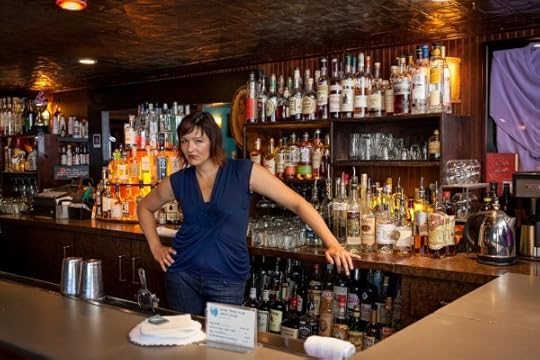
Photo: Jeremy Brooks
1. Reach out across the bar and scream your order.
The fact that you’re physically separated by a bar should be an indication that’s how it’s meant to be. A good bartender knows how to tune out the noise and read your lips.
2. Snap your fingers.
If a bartender makes eye contact, she recognizes that you’re waiting and will be with you shortly. If you go snapping your fingers, prepare to be ignored for as long as possible, and don’t expect your drink to be made with love. Rather, it may be watered down with a dash of hate.
3. Tear apart coasters, napkins, straws.
No bartender wants to pick up the mess you’ve made with your constructions of chewed-up straws and napkins and chewing gum.
4. Interrupt when we’re speaking to another customer.
If a bartender is talking to another customer, especially if he’s explaining something, be patient and keep your comments to yourself. Just like in real-life situations outside the bar, it’s rude to interrupt people when they’re speaking.
5. Ask for a happy hour when there’s no happy hour.
Some bars have happy-hour drinks and some don’t. Some have 1-for-1s and some don’t. So just because you had an amazing deal at a bar just down the street doesn’t mean we’ll be able to offer you the same. There are also set prices on drinks, so the query, “What’s the best deal you can offer me on a bottle of vodka?” just won’t cut it. Telling a bartender you deserve cheaper/free booze just makes you look like an asshole.
6. Alter your drink and then send it back.
Fair enough if you don’t want the celery in your Bloody Mary, but don’t alter your drink until it’s no longer recognizable. There’s a reason why each bar has a set of cocktails created by mixologists; they’re the people who know their stuff. If you do decide to go down this route, and you truly believe you’re an expert, you not liking the drink is your own fault, so keep your opinion to yourself.
7. Overstay your welcome.
If you’re drinking and spending money, stay as long as you like. We’ll make sure you have the best time! But if you’re here to catch up on your emails (clear indication: asking for the wifi password before even ordering anything) or read a book for hours over ONE glass of house wine, please don’t. Unless there’s no one else in the bar, be mindful that those around you are willing to spend money.
8. Don’t tip.
Chances are, if you can afford a pint of beer, you can afford a small tip to go with it, especially if the service was good. Keep in mind that the hourly rate in the service industry is often well below regular minimum wage. Tips are how bartenders make their money.
9. Treat the bartender like a psychologist.
We love chitchatting and meeting new people! But we’re not here to help you hash out your latest crisis; there’s a point at which we really stop caring. Remember, no matter how fun it looks, bartending is a job — not a hobby. It’s also stressful and fast-paced. Don’t be a needy customer who expects your bartender to be giving life advice when there are 50 other humans shouting out their drink orders.
10. Order and dash.
There’s nothing more infuriating than having someone order and dash while the drink-making is in progress. It’s fine if you’ve paid — it’s your own fault you’ve forgotten about it. But if you didn’t, it’ll be the bartender who’ll have to pay. And your drink will be costing us at least an hour of work, if not more. 
The post 10 ways to piss off your bartender appeared first on Matador Network.

Things you should never tell a Brit

Photo: UK Ministry of Defence
1. “I love British accents!”
I’ll begin with my biggest bugbear. Let me just give a quick geography lesson here. Great Britain (or, rather, the United Kingdom) is made up of four countries: England, Scotland, Wales, and Northern Ireland. All of these countries have very distinct national characteristics and very different accents. Within these countries there are even further variances in accent. Like, huge variances. A person from Glasgow will sound absolutely nothing like a person from London.
There is no such thing as a “British accent.” Tell us instead that you like our accent, and don’t insult us by instantly letting on you know nothing about our country and culture.
2. “I can do the best British accent.”
This is a bad move for two reasons. As stated above, “British” accents don’t exist. For that very reason, your version probably isn’t very good — think Anne Hathaway in “One Day” when she somehow managed to mix a heavy Yorkshire accent with elocution-lesson English (appalling).
Also, the novelty of hearing an American bark “tea and crummmmpets!” at you like it’s the funniest thing you’ll ever hear tends not to be the funniest thing you’ll ever hear when you’ve heard it several times in one evening.
3. “Oh, you’re from London!”
Maybe your victim is in fact from London and you’re very good at guessing. But that would be like me hearing you were from America and then immediately assuming you were from New York, when actually you hail from a backwater in North Dakota.
Stick with “the UK,” “Britain,” or, if you’ve really been doing your homework, “England”/”Scotland” (or whatever else you can discern — you’ll score several points for specific counties).
4. “Oh, you’re from Europe!”
The UK is not Europe. Well, okay, technically yes it is part of Europe — but it’s also not. Not to us. We’re pretty proud of our poky little island, and we don’t tend to lump ourselves in with mainland Europe. We’re British, thank you very much, not European.
5. “Cheers, mate!”
This is very closely linked to point #2. But “cheers, mate” is, without doubt, the most irksome. Why? Because every other person we meet will invariably drop it into conversation. And we cringe. Every. Single. Time. Just…don’t do it. Rise above.
6. “My great-grandmother was British!”
It’s not that this is annoying; it’s just kind of irrelevant. One thing I noticed in the US was that you guys all seem to be very aware of your family tree; aside from being ‘Murican on the face of it, you know your roots, where your family come from, and you like talking about it.

More like this: 11 things you should never say to a Canadian
Now, much as I think this is fascinating, you must understand that in Britain we kind of don’t care about that sort of thing. Unless we are very closely descended from a family of immigrants, our cultural ties to our ancestors are generally nonexistent. No offence, but I’m just not bothered if you have some British lineage somewhere down the line — unless it turns out you’re a secret descendant of the Tudor family or something, but that is unlikely.
7. “Ohmaigaaad I could listen to you talk all day.”
Is there anything more awkward than having someone look at you with pure adoration and tell you they could listen to you forever? Not really. Our awkward British dispositions aren’t programmed to cope with the simplest of compliments, so direct and unwarranted declarations of love from strangers are just painfully cringe-inducing.
8. “Do you live in a castle?”
9.9999 times out of 10, the answer is no. Don’t bother.
9. “You drink in Britain? But you do it in a classy way, right?”
I have legitimately been asked this question, and although the girl who spoke these now infamous words is one of my best friends, I still cringe when I think about this. Here’s another nugget of cultural wisdom for you about the UK: We drink a lot. In fact, we are renowned around Europe for being disgusting, binge-drinking louts.
Save yourself the embarrassment if you’re even curious about what British drinking habits are like. FYI: We go hard, we’re disgusting, and we drink a lot of hard cider. Not classy at all.
10. “What is a crumpet?”
The trouble here, apart from the question becoming so repetitive, is that I just don’t know how to describe a crumpet. My befuddled on-the-spot answers have included “like some kind of bread with holes in it” and “kind of like a pancake but really fat and holey.”
Spare your British friend/crush/stranger from accurately describing the world’s most confusing carbohydrate, and do your research instead. And if you really want to impress us, make some yourself (recipe here), because crumpets are distressingly hard to come by in your average American supermarket. 
This post was originally published at Literally, Darling and is reprinted here with permission.
The post 10 things you should never say to a British person appeared first on Matador Network.

Bear unlocks door of car
WHEN I WAS a kid, all I wanted to do was visit the drive-thru safari at Six Flags Great Adventure. What would be better than wild monkeys climbing on my car? As an adult however, I realize how dangerous those kinds of experiences actually are — as well as how many monkeys must die each year from stupid people running them over.
I’m surprised that there is an attraction like this near Yellowstone National Park. I’m not sure exactly how it’s run (the website for Yellowstone Bear World isn’t totally informative, and the reviews on Yelp! are mixed), but if a bear has the ability to be right next to a car and open a door with the single clutch of its paw, maybe it should be regulated a little better? I mean, I feel like there is a reason why animals are kept at a far distance when you see them at the zoo…
Feature photo: John Drake
The post 1 obvious reason to keep your car doors locked at all times appeared first on Matador Network.

English: The only language you need

Photo: kris krüg
In college, I majored in Linguistic Anthropology. I speak five languages — English, Spanish, French, Czech, and Italian. And whenever I travel, I usually make it a point to learn at least a few polite words in the language of the host country I’m in.
Except for Norway. I had planned on learning my ‘basic five’ — hello, goodbye, please, thank you, and Do you speak English? — but the days stacked up with work, and any free time I had prior to the trip was spent with friends and family. I failed to learn anything beyond takk (thanks), and when I got off at Oslo Gardermoen airport, I figured this was going to be a very difficult trip.
* * *
I’ve never not known how to speak the local language.
When I moved to Prague to begin my study abroad program, I spent hours, whole days even, trying to perfect my Czech.
“I don’t think I’ll bother learning Czech,” a fellow student had said, when we were about to board our transatlantic flight. “No one speaks it outside of the Czech Republic. What’s the point, really?”
I stared at her, shocked, disgusted. What’s the point? The point is to show respect for a place that’s not your own. The point is to prove to the world that Americans don’t take other cultures for granted, and that we’re capable of trying to be multilingual, especially when there are people in developing nations who don’t have running water, but could ask for a drink in three or more different ways.
The point is, that every other person in the world learns at least some English before they arrive in the United States. Most of them speak it better than I do. It’s only fair that, as native English speakers, we should do the same.
Knowing at least a little of the host language has gotten me quite far in the past. It’s helped me purchase goods at local prices in the markets of Accra. It comes in handy when trying to get picked up by sexy men in Buenos Aires. I know that if I at least attempt to communicate with people in a form familiar to them, they won’t see me as another American stereotype.
It’s sad, but you can’t deny the McDonalds-eating, faded-blue-jean-wearing, “WHY CAN’T THEY SPEAK GERD DAMN ANGLISH?!” American traveler is very much alive and well. By speaking Spanish in Mexico, Japanese in Japan, and Uzbek in Uzbekistan, maybe I can show the world a different side of my culture.
* * *
The first time I had to rely on speaking English was at the duty-free cash register at the Oslo airport. Here we go, I gulped. Time to look like an insensitive idiot who didn’t bother trying to learn a lick of Norwegian, not even a greeting or two.
“Can I see your boarding pass?” the cashier asked, once I stared at her first Norwegian-spoken request, blank-faced. We exchanged words in English for the rest of the Aquavit purchasing ordeal.
I felt dirty. I felt like my years of training in other languages, and developing an acute ear for picking out dialects and accents, had been all for naught. I hung my head as I walked away, wondering how I’d ever get to my rented apartment if I didn’t know how to ask for directions.
Maybe it’s less about knowing how to conjugate verbs, and more about just not being an asshole.
I try not to assume that the people I interact with can speak English. I think it’s something too many people think is a “given,” and it gets them into trouble. It didn’t matter to me that Scandinavian countries lead the rest of the world in English as a Second Language fluency — if Norwegians were capable of learning English, I was capable of learning Norwegian.
But the more I didn’t speak Norwegian, the more comfortable I felt speaking English to everyone else. I wasn’t really met with animosity for the language I used. Only once did someone roll their eyes at my failure to comprehend what they had said, and even then I didn’t feel so bad, because that’s just a rude thing to do in any culture.
I realized that, while it’s awesome to go all-out and try to become fluent in ten languages, the reality is, English is spoken everywhere. Maybe it really isn’t necessary to “trick” locals into thinking I’m one of them, if it’s only for a week-long vacation. Maybe people can get by in another country just by being as polite as they are at home.
Maybe it’s less about knowing how to conjugate verbs, and more about just not being an asshole.
People from the United States have a huge advantage — in most cases, wherever we choose to travel, someone, somewhere, will be able to communicate with us. Not everyone can say the same.
Do we take it for granted? Absolutely. Does it make us bad travelers? I don’t think so. I think there’s more to travel than trying to blend in. It would be nice to be a walking Tower of Babel, but I don’t think we need to beat ourselves up whenever we think an episode of miscommunication has tarnished part of our travel experience.
Maybe that person who works at the Eiffel Tower isn’t insulted that you don’t speak French; maybe she just hates her job, and that’s why she comes off as being less than thrilled to be selling you a ticket.
I ended my trip to Norway the same way it had begun — without learning any Norwegian whatsoever. I had to have menus translated for me. I couldn’t pronounce tram stops correctly. I relied heavily on pictures to help me figure out what the hell I was buying at the grocery store (Norway has many different types of milk), and even then, I wasn’t always successful.
But I did it with a smile, and with lots of apologizing. I still had some very cool cultural exchanges, and I still had an epic time traveling through a new city. Would it have been better if I had spoken only Norwegian?
Maybe. I would have been able to eavesdrop better. 
The post The only language you need to know is English, really appeared first on Matador Network.

6 eco-challenges in Southeast Asia
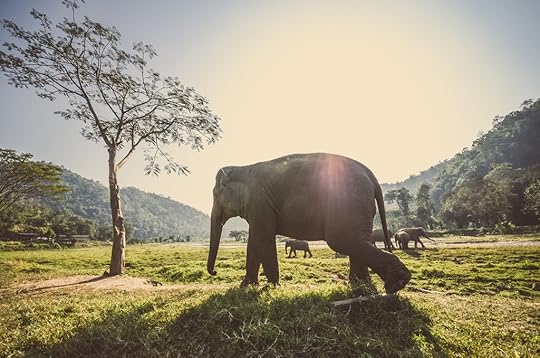
Elephants in Chiang Mai. Photo: Eddy Milfort
SOUTHEAST ASIA IS OBJECTIVELY one of the most beautiful regions on Earth — it’s covered in dense jungle, it’s peppered with gorgeous beaches, and it’s full of incredible wildlife. It also has some spectacular urban centers, recently stimulated by massive economic growth.
Unfortunately, the act of pulling people out of poverty and into the developed world often comes at the expense of the local environment. This is true of all countries in this scenario, but it’s particularly acute for Southeast Asian nations, as their economies — especially the tourism sector — depend so fundamentally on pristine natural resources.
Most of the environmental issues in Southeast Asia are inextricably linked, and working to ameliorate one will often have added benefits for the others. Here are some of the problems, and some things you personally can do to help.
1. Endangered species conservation
The problem: Southeast Asia sits almost entirely in the tropics, and as such, is covered in rich, dense, biologically diverse jungle. As a result of a wide number of factors — from poaching to deforestation — many native species are endangered. One of the most prominent of these species is the Asian elephant. The total number of Asian elephants in the world has sadly fallen to below 30,000, down from 100,000 at the beginning of the 20th century in Thailand alonesrc.
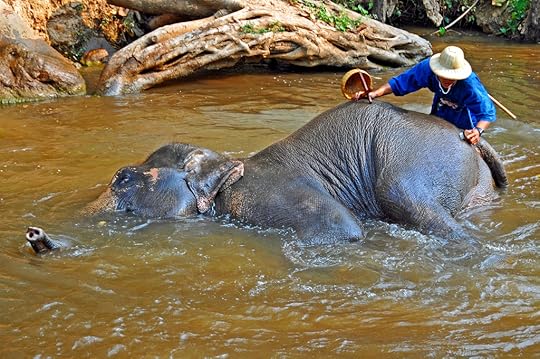
Photo: Dennis Jarvis
Asian elephants are endangered for a number of reasons: First, they have been subject to ivory poaching. Though elephant poaching is illegal, there’s still plenty of demand for ivory, so it happens anyway. Second, they have experienced widespread habitat destruction, which simultaneously makes it harder to get food, and puts elephants into much more contact with humans, which can often result in the death of either the human or the elephant.
Elephants are by no means the only endangered species in Southeast Asia — the Sumatran tiger, the orangutan, and the Javan rhinoceros all face the threat of extinction. Some estimate that over 40% of all plant and animal species in Southeast Asia could go extinct during the 21st centurysrc.
How you can help: The name of the game here is conservation. In the broader scale, this means cracking down on poaching and supporting nature preserves. To help stop poaching, you can do a number of things: Never buy ivory or any other product obtained from an endangered species. Limiting demand is one of the first steps to ending poaching. You can also support organizations like the World Wildlife Fund that supply and support anti-poaching patrols.
Nature preserves are another partial solution. They provide a protected sanctuary for animals, and an area that is more or less safe from habitat destruction. You can support them by either donating to one of them specifically, or by going and visiting them yourself. Also, educate yourself!
2. Air pollution
The problem: Air pollution is a global problem, but Southeast Asia does have among the worst air pollution in the world, only behind East Asia and Indiasrc. The region is prone to relatively frequent “hazes,” which are the result of widespread fires. These fires are generally started intentionally by either small-scale farmers or companies trying to clear land of trees so they can exploit it the following year.

Slash-and-burn haze over the Indonesian island of Sumatra. Photo: NASA Goddard Space Flight Center
The hazes in Southeast Asia have become an increasingly frequent occurrence and can spread across many countries, causing serious health and safety concerns. The 2013 haze — mostly originating from fires in Indonesia — caused problems in Singapore, Brunei, Malaysia, Thailand, and Indonesia. During hazes, it can be hazardous to even go outside, so often cities will shut down, adding economic costs to the list of consequences.
How you can help: Air pollution is not a simple problem to solve, and in terms of fighting hazes in Southeast Asia, it’s even more difficult if you’re not living there. That said, we all share the same atmosphere, and working to reduce pollution where you are is useful to everyone on the planet. Work to conserve energy in your home, and try to reduce your overall carbon footprint (which, to be honest, is one of the best things you can do for pretty much all of the items on this list).
You can also support palm oil companies — among the worst offenders of the Indonesian slash-and-burn haze fires — that have zero-burn policies, and that refuse to work with third parties who use slash-and-burn techniques. Environmentalist and international pressure have already resulted in the world’s largest palm oil corporation, Wilmar International, taking such a step. You can also support organizations that push zero-burn policies.
3. Destruction of coral reefs
The problem: Southeast Asia is known for its incredible coral reefs, and, subsequently, its incredible diving. The area known as the “Coral Triangle” — mostly centered on the islands of Oceania — is the most biologically diverse marine environment in the worldsrc. Unfortunately, the reefs of Southeast Asia have been seriously degraded over the past several decades.
This is the result of several factors: First, the ocean absorbs about a quarter of all the carbon dioxide we put into the atmosphere each yearsrc. While this actually helps reduce the effects of global warming temporarily, it also means that more of that carbon is going to be converted into carbonic acid, increasing the ocean’s acidity level over time. This acidification fundamentally weakens coral reefs, making them more prone to disease, and less likely to recover from disturbances.

A brain coral showing signs of bleaching. Photo: Carson
The second factor is overfishing. Not only does the widespread removal of fish species harm the coral reef ecosystem, but many of the methods used to catch the fish harm the system itself, such as blast fishing (the use of dynamite), and cyanide fishing (using sodium cyanide to stun the fish and capture them for personal aquariums).
A third factor is actually dive tourism. When divers visit coral reefs, they’ll often interfere with the ecosystem in a way that can damage it — whether by walking on the reefs or taking specimens home for themselves.
How you can help: There are a number of things you can do to protect Southeast Asian (and virtually all) coral reefs. The first, obviously, is to try and reduce your carbon footprint. Less carbon in the air means less carbon in the ocean, which means less carbonic acid damaging coral reefs. You can do this by simply driving less and walking or biking more, and by reducing your energy consumption.
If you’re an aquarium owner, make sure you’re buying ethically bred or captured fish — never buy cyanide-captured reef fish. Another important action to take is to ensure you’re eating seafood ethically. While this may mean reducing the seafood you eat, it doesn’t mean you have to cut fish out of your diet entirely — just make yourself aware of what fish in your area are the most sustainable to eat.
And finally, if you go diving at any of these reefs, be sure to use a dive operator that’s focused on sustainability and is aware of the threats to their local reef. The standard rule is, “Take only pictures, leave only bubbles.” If you’re in the area for a while, try volunteering in reef cleanups.
4. Deforestation
The problem: As cities and populations grow, more land area is needed. Often, this area is created out of forests. In Southeast Asia specifically, given its position in the tropics, much of the forest that’s destroyed is rainforest, one of the most biologically diverse ecosystems on the planet. Rainforests are not only home to more than half of the world’s plant and animal speciessrc, but they also provide over a quarter of our natural medicinessrc, and they absorb over a quarter of our planet’s carbon dioxidesrc.

Deforestation in Riau province, Indonesia. Photo: Wakx
So naturally, the effects of deforestation of rainforests can be catastrophic — not only does it destroy plant and animal habitats, but it also accelerates climate change and potentially deprives us of undiscovered life-saving medicines. Deforestation isn’t an easily solved problem either. Often, it happens because poor families need more space to plant their crops or simply need wood for fuel, or it may be a side effect of unintentional wildfires.
How you can help: Stopping deforestation altogether is not possible as long as there’s population growth. But there are ways to do it sustainably. For example, we can create international carbon offset programs. The best way for you to help push for this is to call your local representative, or to support an organization working on carbon offset campaigns. You can also make sure you’re buying recycled wood, or are buying from companies that commit to zero deforestation policies.
5. Water security
The problem: The world as a whole may well be close to reaching “peak water,” the point where we start consuming fresh water faster than it can be replenished. In few places is this concern as acute as it is in Southeast Asia. First off, the Himalayan glaciers that serve as the sources for many of the major Asian rivers — including the Mekong, which passes through China, Myanmar, Laos, Thailand, Cambodia, and Vietnam — are melting faster due to global warming, and rivers such as the Mekong are already heavily dammed, which gives countries upriver huge power over the water supply for downriver nations. As much of this water is used in the growth of crops, this raises food security issues as wellsrc.

The Mekong in Thailand. Photo: Fredrik Thommesen
Of the fresh water that is readily available, much of it is polluted or inadequately sanitized. Indonesia is the worst in the region, with only 30% of city residents and 10% of village residents having access to clean watersrc.
How you can help: This ties in yet again to the other environmental problems listed here. If we take serious action to stop climate change, we can at least cut back on the melting of Himalayan glaciers, while also preventing droughts. Slowing deforestation also makes soil erosion, landslides, and flooding less likely.
On a smaller level, if you’re visiting Southeast Asia, you can participate in voluntourism projects that focus on river cleanup, or on helping install water sanitation in villages that may not have access to clean water otherwise.
6. Increased urbanization
The problem: Southeast Asia is not immune to the global shift away from rural living and towards city living, and this shift carries a good number of potential environmental consequences, especially if it’s not guided by smart and sustainable policies. Urbanization can result in overcrowding, pollution, poor sanitation, and political instability — which in turn could lead to violent conflict, which is never good for the environment. Additionally, if cities are planned poorly, massive urban sprawl is often the result, which in Southeast Asia would bring about more deforestation, habitat destruction, and carbon emissions.
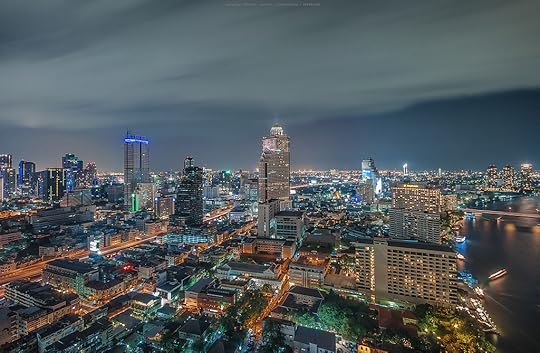
Photo: Prachanart Viriyaraks
On top of this, city dwellers tend to have higher levels of consumption of food, energy, and goods than those living in rural areas, which would naturally put more of a strain on resourcessrc.
How you can help: Urbanization isn’t a totally lost cause — much of the potential environmental harm depends on the behavior of the city dwellers rather than the mere existence of the city. Cities that are planned sustainably are going to produce less of an environmental impact, and cities with low poverty levels can prevent the creation and sprawl of shantytowns, which are sanitation and pollution nightmares.
Some of the things you personally can do is support local small businesses by using poverty-reducing microlending sites like Kiva and Zidisha, and by supporting organizations that foster sustainable development. 

Here’s your chance to give back and promote socially responsible travel to Southeast Asia. The Tourism Authority of Thailand is giving three groups of friends the opportunity to explore Thailand and participate in volunteer community projects that are helping make the world a better place. Enter today for your chance to win.
The post 6 environmental challenges facing Southeast Asia (and what you can do to help) appeared first on Matador Network.

Giving is a concept I struggle with
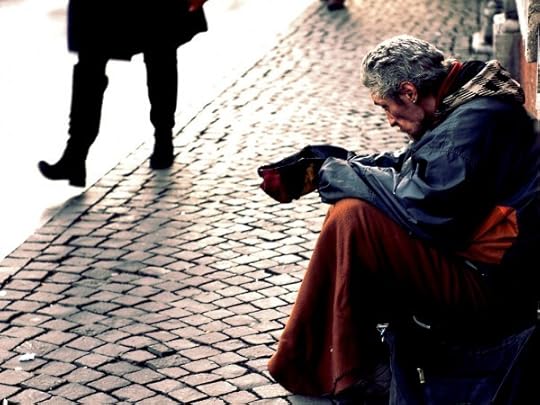
Photo: Λ |_ ν-\ Γ Ø
Giving was a concept my mother tried to instill in me when I was young, but for some odd reason it never quite stuck. If I learned anything from birthdays it was this: It was much, much better to receive than to give.
The first time I gave (willingly) to someone, I was 12. Our family had traveled from North Carolina to Virginia Beach for a craft show. I was helping dad pack up for the day when an old black man in an Acapulco shirt approached me.
“Hey,” he said. “Remember me? It’s Pappy!” I didn’t remember this Pappy fellow. How did he know me? “Say, youngblood, won’t you lend old Pappy a dollar.”
A classmate asked me for ten cents and I’d tell him to get lost. But Pappy had me under a spell. Nobody that old had ever asked me for money. Dad was hanging back, watching as I pulled out my velcro wallet and handed old Pappy a dollar.
Pappy shook my hand, and when he was gone dad came up and, in a curious tone, said, “Why did you give him a dollar?”
“He said his name was Pappy. I felt like I knew him.” I felt very foolish.
Twelve years later I was in the strange town of Austin, Nevada. I’d recently quit my first job after college and was cruising around the country, finding myself. Half-crazed from driving and loneliness, I parked on Main Street and took a walk around.
I’d locked my keys in the car. The police didn’t carry slim jims. “They took ‘em away from us,” said the cop behind the desk. “We scratched too many cars.” He wrote down the name and address of a man named Jeremiah. “He can do just about anything,” said the cop.
I climbed a hill and found Jeremiah on a ladder inside a gutted house. He had a beard and very kind blue eyes. “Hello, brother,” he said upon seeing me at the doorway.
I told him my predicament and, after some convincing, we walked toward my car. I don’t know why, but I told him about a girl I was seeing, and how I maybe wanted to be a writer, something I’d never told anyone. I told him this as he broke into my car, popping the lock with a coat hanger.
“Thanks,” I said, and offered him a 20, which for me was a lot.
“No,” he said. “You keep that. Instead, I want you to do me a favor.”
“Okay…”
“Do something kind for someone else. That’s how you can repay me.”
I put my wallet away. Once again I felt very foolish.
It didn’t escape my attention that the universe had arranged this situation, and once again I’d blown it.
Recently, I was clearing out the bottles from my Düsseldorf apartment to return to the market. While placing them in a bag, I found a fortune stuck to the bottom of a beer bottle, which was weird. I hadn’t had Chinese food in a while, let alone a fortune cookie, but there it was.
“IF YOU CONTINUALLY GIVE,” it read, “YOU WILL CONTINUALLY HAVE.”
The message stayed with me as I walked to the market. Where did it come from? Was it a sign?
I was in the cleaning supplies section, looking for dish detergent, when a very old woman came slowly down the aisle. She had grey hair to her shoulders and a shabby pink sweater. In her hands she carried a glossy gossip magazine.
“Guten tag,” she said, stopping beside me. Her eyes were like wet marbles. A single tear had rolled down her face. She didn’t know it was there. She said something in German that I didn’t understand, and then asked for money, which I understood perfectly.
“Zehn euro, bitte.” She was asking for ten euros (almost $14 US).
Dumbfounded, I explained that I didn’t have that much. She searched my face and asked where I was from. I told it, and she tried to bargain me down to nine.
“I want to buy this magazine,” she said, “…and some flowers.”
“I’m sorry,” I said, and walked across the store. As I fed the bottles into the bottle machine, I remembered the fortune and thought, This is too strange to be a coincidence. Suddenly I felt very foolish. It didn’t escape my attention that the universe had arranged this situation, and once again I’d blown it.
After collecting my deposit slip, I decided to follow the old woman. From behind the eggs, I watched her ask a woman in high heels and jeans for ten euro. She said no, as did the man in the pasta aisle. She even approached one of the stock boys. She was anything if not persistent. I thought for sure someone would give her the money, as Germans are usually quite charitable. But nobody did.
I followed her over to the periodicals rack, where she’d returned her gossip magazine. Casually I walked over and said, “Oh, hello again. Any luck?”
She raised her hands as if to say, Hey, what can you do?
“Here,” I said, and handed her enough to buy either the magazine or flowers.
“Five euros more?” she said, raising an eyebrow. The tear was still on her face.
“Bitte schön,” I said, which basically means you’re welcome.
“Danke,” she said.
She eyed the magazine, then walked over to the flower kiosk. As she picked out a small bouquet of roses, I wondered what she was thinking. What kind of person did she think I was? Did she think I was a successful writer who enjoyed handing out money to strangers? Did she assume young people owed her something? Did she think I was being a cheapskate? Should I have given more, or could it be that this whole experience was just practice? 
The post Giving is a concept I still struggle with appeared first on Matador Network.

Massive aurora borealis [video]
The aurora borealis — or Northern Lights, as it’s commonly known — is one of the most surreal natural phenomena out there. It’s also relatively unpredictable, a result of solar winds hitting Earth’s magnetic field, and some solar winds are calmer than others. So if you’re trying to plan a trip to, say, Iceland in the winter, and are just taking a few days there with the intent of catching the Northern Lights, you could very well go home without seeing anything, or catching only very weak, mild auroras.
That’s not the case for the makers of this film, taken in Russia. They caught a gigantic aurora on film, and it’s just as incredible as you’d expect. 
The post Massive aurora borealis caught on film in Russia appeared first on Matador Network.

7 iconic American road trip routes
THERE ARE OVER 160,000 MILES of highway in the United States. When you’re setting out on your road trip this summer, you could certainly just pick a route at random and probably have an awesome time. Or, if you want a sure thing, take on one of these iconic road trips and find out why they’re considered American classics.
1. Route 66
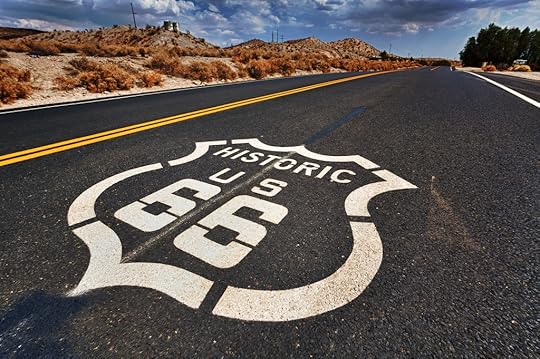
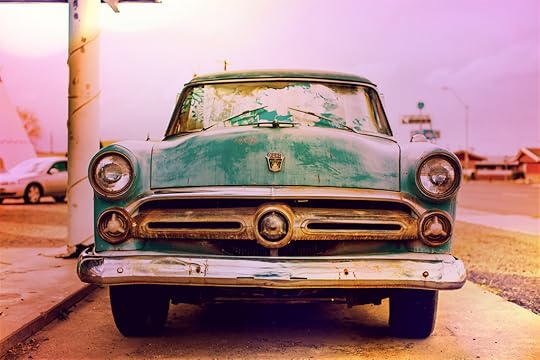
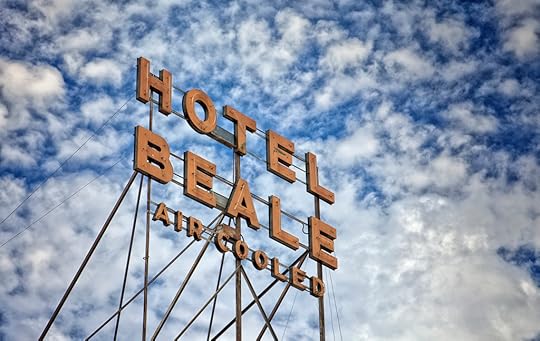
Ah, the Mother Road. This Illinois-California route was wildly popular post-WWII, and it still has that old-timey nostalgia even today, as evidenced by the stops on this specially curated Route 66 Roadside Icons trip.
Images: 1) Randy Heinitz 2) Thomas Hawk 3) Randy Heinitz
2. Pacific Coast Highway
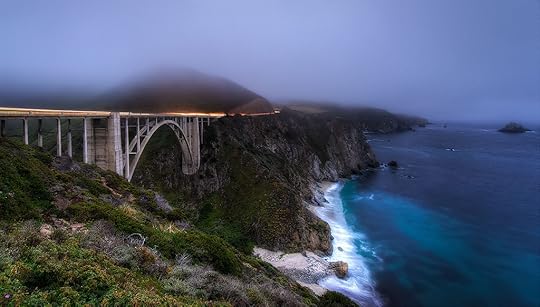


This All-American road is literally right on the California coast, so it offers some pretty stunning scenery, plus there’s tons of great stops along the way from Legget, across the Golden Gate Bridge, through Big Sur, and down into LA and San Diego.
Images: 1) terratrekking 2) Eric Demarcq 3) jason jenkins
3. Extraterrestrial Highway
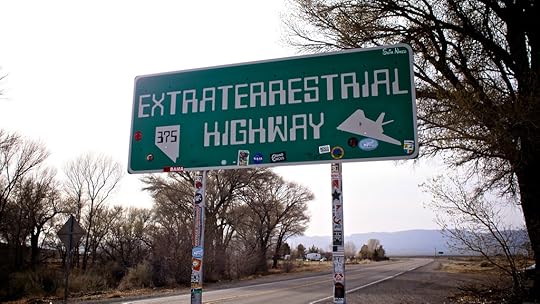

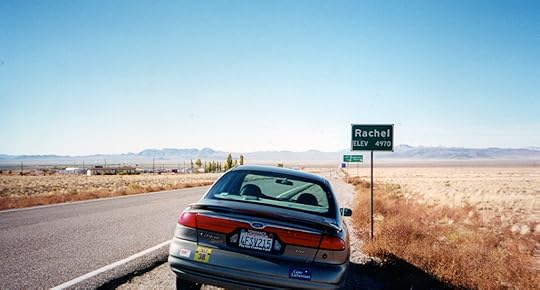
Looking for a more offbeat trip? Even though we can’t really travel into space (yet), you can at least travel the Extraterrestrial Highway (aka Nevada State Route 375). It takes you through some pretty unremarkable desert, where some pretty remarkable (alleged) alien encounters have occurred. While we can’t guarantee a close encounter, we can help you find the most out-of-this-world spots with this guide to one of America’s weirdest roads.
Images: 1) John Biehler 2) James Marvin Phelps 3) InSapphoWeTrust
4. Oregon Trail

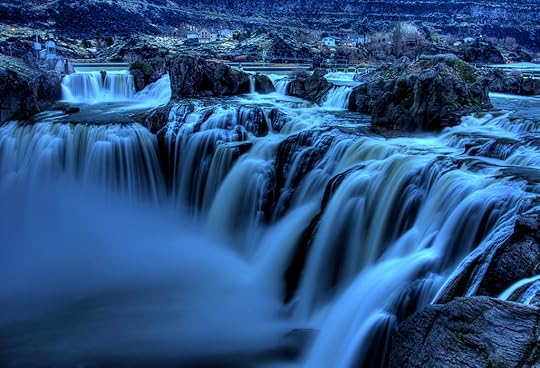
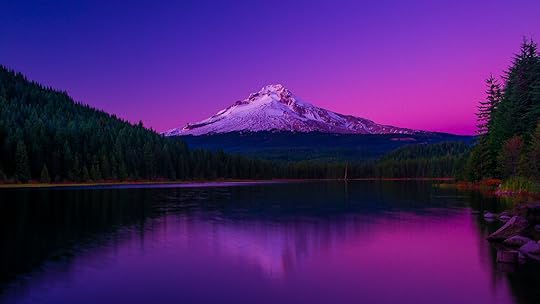
Had a hard time beating the game? Your chances of dying of dysentery while taking this trip in real life are a lot slimmer. This route (best traveled in a Conestoga wagon) will guide you through history and through some of America’s most gorgeous Western scenery. This guide, inspired by the computer game, takes you past some of the landmarks that aided the pioneers.
Images: 1) Frank DiBona 2) Brett Mosley 3) Kartik Ramanathan
5. Natchez Trace Parkway

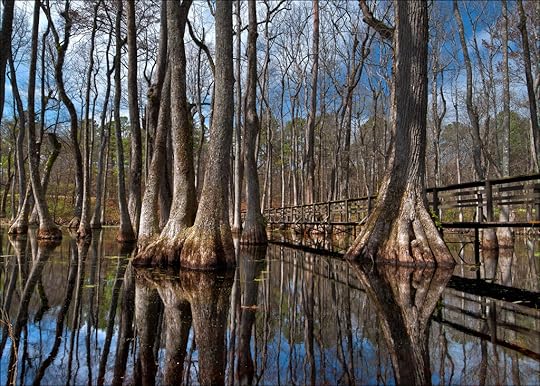

This former buffalo trail is now one of America’s more scenic drives. Check out some classic Southern sights, from historical landmarks to diners that serve delicious comfort food, with this guide to driving Natchez.
Images: 1) Kim Jenkins 2) Nietnagel 3) Pratap Sankar
6. Blue Ridge Parkway
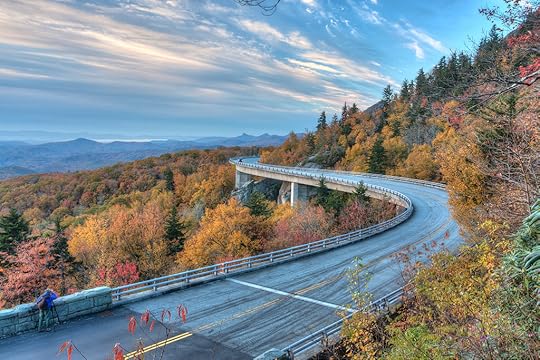
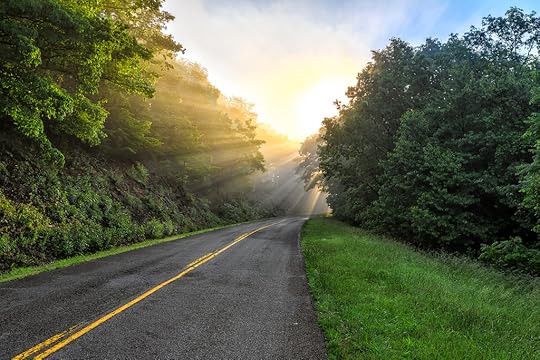
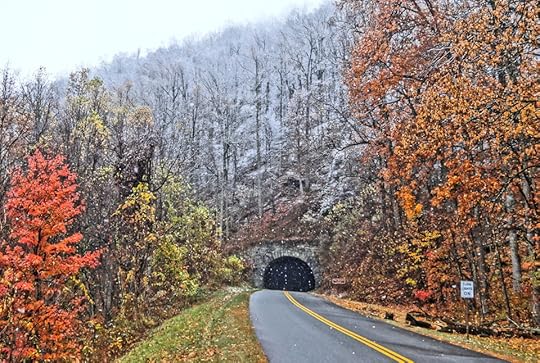
This All-American road connects two national parks along a chain of mountains, so you know you’re in for some breathtaking views. Travel it in the summer and spring for hiking and camping, or do it in the fall to catch the colorful foliage.
Images: 1) Matthew Paulson 2) Kay Gaensler 3) zen Sutherland
7. Going-to-the-Sun Road

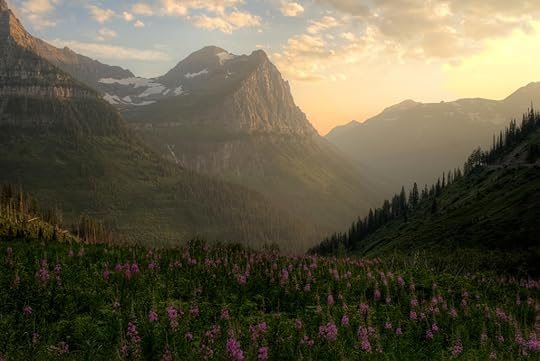
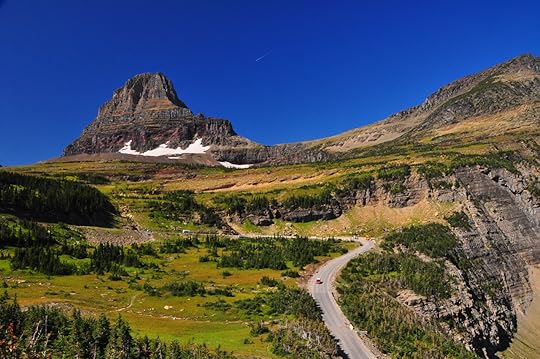
If you’re visiting Glacier National Park, you’ll have no choice but to take this incredible highway. As the only road that crosses the whole park, you’ll see panoramic mountain views, bright blue glacial lakes, and forested valleys. In fact, parts of the trip may look familiar, as it’s been featured in The Shining, Forrest Gump, and Blade Runner. 
Images: 1) Mark Stevens 2) Ryan 3) Bill Gracey

The open road. That’s what it’s all about. Driving down long stretches of asphalt, pulling over at a local diner for some grub, and discovering the most incredible roadside wonders. Roadtrippers is a simple but powerful road trip planner that helps you discover, plan, & book your adventure.
The post 7 iconic American road trip routes to hit this summer appeared first on Matador Network.

Matador Network's Blog
- Matador Network's profile
- 6 followers


